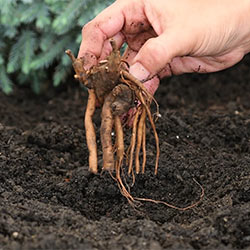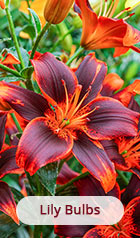Pollinators love them too. These native perennials attract bees, butterflies, and other beneficial pollinators. If left standing, their flower seed heads also provide food for songbirds. Coneflowers love the sun and do best in a sunny location or partially shaded areas that receive several hours of sunlight each day. They are easy to grow, and once established, are drought tolerant. We have a variety of coneflowers for sale that can be planted in an array of settings, including mixed perennial gardens, prairie gardens, naturalized settings, and cutting gardens. For tips on how to care for echinacea plants, make sure to check out our coneflower
planting guide. With their bright petals and easy to care for nature, echinaceas make the perfect addition to any garden. Buy coneflowers from Michigan Bulb today!
When do coneflowers bloom?
Coneflowers bloom in mid-to late summer, typically from July into October in most of the United States. Coneflowers have been bred from North American native plants, and can be planted in nearly all of the U.S., with the exception of the far-northern Midwest and the deep South. Gardeners in very cold climates may see a shorter blooming season, while Southern gardeners may see their coneflowers begin to bloom in early June and extend late into fall. Most coneflower species are hardy in zones 3 through 9, making them an ideal plant for naturalizing no matter where you're gardening.
What type of soil should coneflowers be planted in?
Coneflowers prefer soil that drains well, and they tolerate dry soil and drought well. Cultivated from plants native to the American plains and prairies, coneflowers don't require heavy fertilization, and prefer soil that won't become waterlogged. When planting coneflowers, skip amendments if your soil is rocky or sandy. If you have rich, clay-heavy soil, add loam or sand before planting your coneflowers.
When should I mulch coneflowers?
While coneflowers don't mind soil on the dry side, they do need some moisture-and mulch can help retain water during dry spells. Mulching can also reduce weed growth around your perennials, and can add nutrients to the soil as it decomposes. Mulch your coneflowers in spring, in preparation of the hotter summer months. Apply mulch around your plantings at about two inches thick each spring. In cold climates, mulch over the flowers as part of garden winterization in late fall.
When should I prune coneflowers?
Don't cut your coneflowers back to the ground until after the first frost-coneflowers need time with their foliage intact, in order to save up energy in their roots. However, coneflowers really do not need to be pruned at all. Leaving your flowers upright through the winter provides winter interest, as the dried cones of these tall plants provide lots of spiky, vertical texture. Birds appreciate coneflower seeds, too! In fall or early spring, cut back your coneflowers to just a few inches above the ground.
Should you deadhead coneflowers?
Deadheading after the first round of blooms can encourage coneflowers to flower again. To deadhead spent coneflower blooms, look to the leaves just below the flowers, and snip to just above those leaves. We recommend deadheading after the first round of blooms, but leaving the later-blooming flowers into late fall, to dry out as winter enters the scene. Those cones add lots of vertical, textural interest during the cold months, and the winter will stop by to enjoy the seeds. Of course, if you just don't enjoy the look of spent flowers, it won't hurt to deadhead your plants after they bloom in both early and late season.
How much sun do coneflowers need?
Coneflowers are true sun plants, and prefer lots of direct sunlight-eight hours per day is best. However, most varieties can survive a little morning or afternoon shade, but may bloom less, or lean a little, with inadequate light.
How much water do coneflowers need?
Coneflowers need an inch or so of water per week, so water your coneflowers regularly, in particular during dry spells. A good rule of thumb is to water when the top inch or so of soil is dry.






















